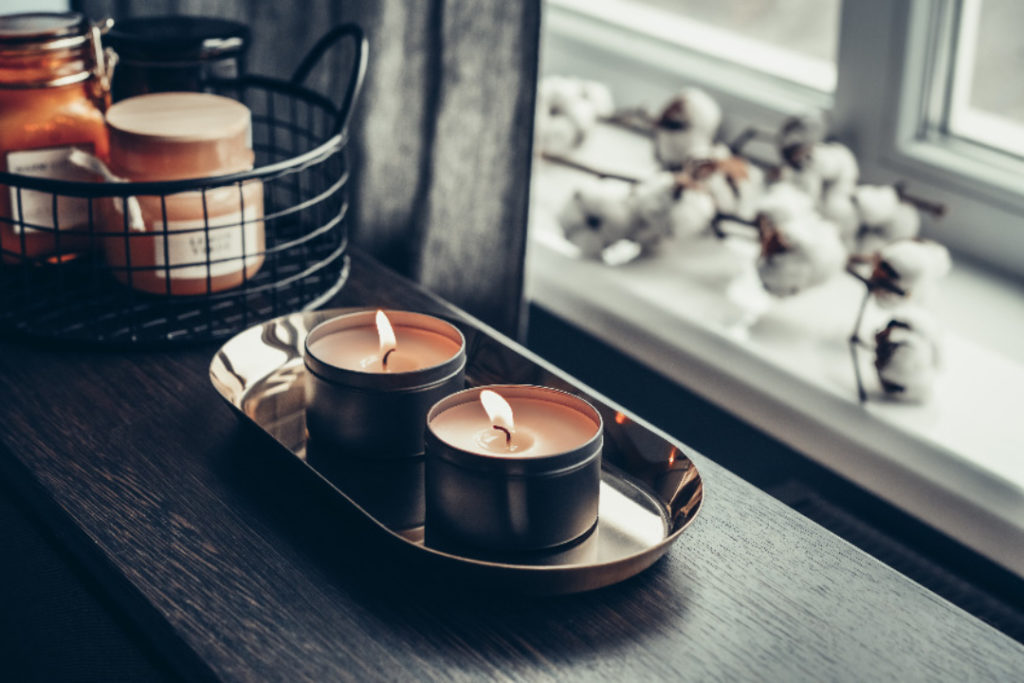Hanukkah. Solstice. Yule. Christmas. All these powerful celebrations coincide this week, and while all have different themes and belong to different faiths, they all share one commonality: they celebrate the return of light and hope into a dark world.

For caregivers, the holidays can be extremely stressful as we try to balance the needs of others with the needs of ourselves. It can be especially difficult when the people in our care are no longer able to enjoy the holidays they once loved.
For me, watching my grandmother, the woman who taught me do “decorate throughout the house” lose her love of Christmas, and (after she had been in a care home) her comfort in our home and her discomfort with the change in her routine, was especially saddening.
In the twenty years she passed, and in the four years since my stepfather died, we’ve tried to keep their spirits with us and focus on the good memories. For my grandmother (and my mother-in-law, though I didn’t know this part of her until much later), we incorporate cardinals into our holiday décor. Napkin rings, a candle ring, and several ornaments on my tree all feature that bright red bird.
My stepfather was ethnically Jewish, though he was not observant. Still, when he and my mother were first married, we celebrated Hanukkah every year so that his son, my stepbrother, would know the culture he came from. Even when my stepbrother didn’t join us for holidays, because he was busy with his wife’s family, we lit a menorah and made potato latkes and found sufganiyot (kosher jelly donuts). Now, we skip the donuts, but we still make the latkes my stepfather loved. When Christmas and Hanukkah overlap, as they do this year, those latkes, along with lox (smoked salmon), and applesauce and sour cream (why choose?).
Keeping these rituals is more than preserving memories or honoring family history, it’s also a form of self-care. It’s a way of treating ourselves kindly.
This year, my vibrant, active, mother is in temporary need of care, because she’s dealing with an illness that prevents her from driving. We had to cancel our plans to take her to a fancy restaurant on Christmas Day and scale back our plans. Instead of Christmas Eve at her house and Christmas Day at ours, I’m hosting both parts of the, but the little bit of extra work is worth it.
To help reduce my own stress, I’m taking time for hot baths, keeping our meals this week to one-pan dinners, and watching a lot of Hallmark movies. I also have a massage scheduled for Friday evening.
But I’m also lighting a lot of candles. Candles, for me, are more than just decorations or light sources. They’re a way of seeing the world through a softer lens, not ignoring the harsh brightness of reality, but blurring the blunt edges a bit.
As well, the flickering flames remind me that we’ve reached the longest night of the year, and that every day, now, will have a little bit more sunlight.
There’s a line in an episode of the British science fiction show Doctor Who about this very thing: “On every world, wherever people are, in the deepest part of the winter, at the exact midpoint, everybody stops, and turns, and hugs, as if to say “Well done. Well done, everyone! We’re halfway out of the dark.”
Here on earth, Hanukah, the Winter Solstice, Christmas, and Yule are the names we’ve given to that half-way point. As caregivers, we will often have more days of darkness than others, but that means we can – we must – we do have a greater appreciation for the light.
May whatever winter holiday you celebrate be full of love, light, and laughter. And may you take a little extra care of yourself, as you move through the dark.
